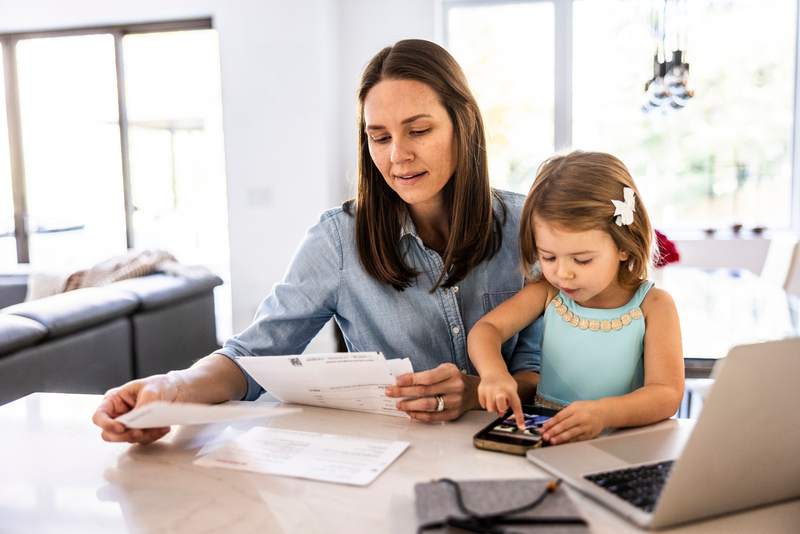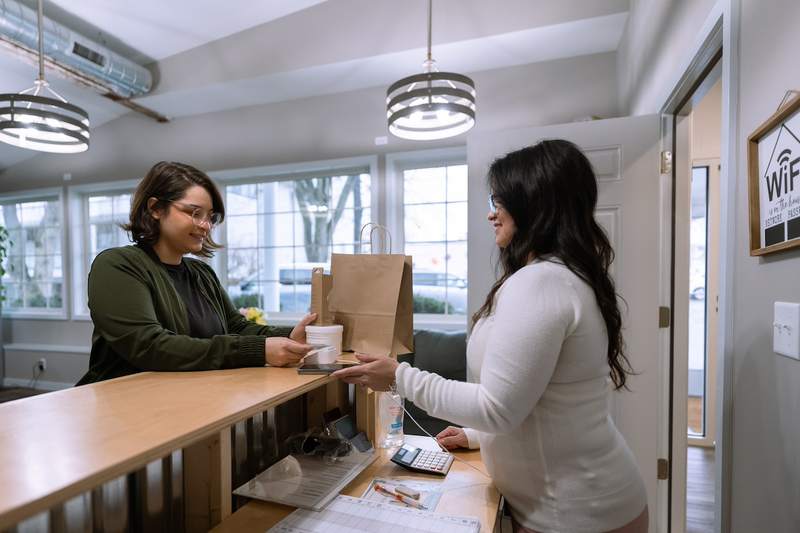If you have credit card debt, you’re not alone. Forty-six percent of American households have credit card debt, and the average cardholder owes $7,932. In addition, total credit card debt hit a record $1.21 trillion In December 2024. No one strategy for paying down credit card debt works for everyone. What works for you will depend on your situation, preferences and priorities. Here are eight of the best ways to pay off credit cards.
Key Takeaways:
- Ease of use and high interest rates make credit card debt easy to accumulate and difficult to pay off.
- If you carry a balance on your card, you’ll be charged interest and your balance can increase quickly.
- There are several strategies that can help you pay down your credit card debt, though you also need to take steps to avoid accumulating new debt.
1. Limit Your Credit Card Usage
The first step toward getting out of debt is to stop adding to it. It can be convenient to pay for groceries or gas with a credit card if your checking balance is low, but you can’t eliminate credit card debt without learning to live within your means. This is where tracking your spending and preparing a budget you can follow without relying on credit cards for anything other than emergency expenses is important.
What’s Your Goal?
Buy A Home
Discover mortgage options that fit your unique financial needs.

Refinance
Refinance your mortgage to have more money for what matters.
Tap Into Equity
Use your home’s equity and unlock cash to achieve your goals.
2. Snowball Method
If you have more than one credit card, you probably want to know which credit card to pay down first. The snowball method’s answer is to focus on paying off the smallest credit card balance first. You make minimum payments on your larger debts and pay as much as possible to the smallest debt. Once the small debt is paid off, you take the money you had been paying toward that account and add it to your payment for the next-smallest debt and continue doing this until all your credit cards are paid off. It’s called the snowball method because as you pay off accounts, the amount you put toward the next account grows like a snowball rolling downhill.
This method is popular because it quickly reduces the number of accounts you pay. The downside is that making the minimum payment on larger debts may cost you more in interest in the long run.
3. Avalanche Method
Similar to the snowball method, the avalanche method targets first the account with the highest interest rate. This method may save you more on interest than the snowball method but may take longer to show results in terms of how quickly you pay off cards. You may need months or years to pay off the account with the highest rate if it’s also the one you owe the most on. Just make sure you aren’t using that card to make any purchases and don’t neglect to pay the minimum balance on your other credit cards.
4. Pay More Than The Minimum
Another approach is to pay more than the minimum on all cards. This is especially helpful if your cards have similar balances and interest rates. While this reduces your debt across the board, spreading out your payments limits the amount you can put toward any one card. Your balances will go down more slowly, and you’ll continue to accrue interest on what you owe.
5. Transfer Your Balance
A balance transfer allows you to move the debt on one credit card with a high annual percentage rate to one with a lower rate or sometimes no rate. Many banks offer balance transfers to attract new business. The trick is the lower rate will expire, so you’ll want to pay down your debt as much as possible while rates are low.
Ready To Become A Homeowner?
Get matched with a lender that can help you find the right mortgage.
6. Get A Debt Consolidation Loan
A debt consolidation loan is a predictable way to pay down your debts and reduce your interest rate. Debt consolidation works by taking out a personal loan and using the money to pay off all your credit cards. You then repay the loan you used to consolidate your debts. The advantage is that personal loans usually have lower interest rates than credit cards, saving you money while simplifying your budget.
7. Borrow Your Home Equity
If you own a home, your equity is the difference between what your home is worth and how much you owe on it. If you have enough equity, you can use a home equity loan for debt consolidation, or a home equity line of credit or cash-out refinance and repay it at rates far lower than those for credit cards. The downside is you’ll have to pay closing costs to get these loans. They also are long-term loans, so you’ll be making payments and paying interest for as much as 30 years. And, if you default, you risk losing your home to foreclosure.
8. Contact Your Credit Card Provider
Some lenders will work with borrowers to create a repayment plan. If you are facing a specific financial hardship, such as job loss, some credit card providers will let you postpone payments or pay a lower interest rate for a time. You’ll typically have to supply proof of your financial hardship to qualify for a debt relief program.
Take The First Step To Buying A Home
Find a lender that will work with your unique financial situation.
Understanding Credit Card Interest And Its Risks
In general, credit card interest rates are higher than other loan types. The interest you pay is usually expressed as an annual percentage rate, which reflects how much it costs on an annual basis to carry a balance.
The APR is applied to your unpaid balance, so the higher your monthly balance is, the more interest you’ll be charged.
Credit card debt interest compounds daily, further increasing your balance.
1. How Much Is Interest On A Credit Card?
Credit card APRs historically have been higher than other types of credit but have increased substantially in recent years. The Consumer Financial Protection Bureau reports that the average credit card APR increased from 12.9% to 22.8% from 2013 to 2023.
2. How Credit Card Interest Is Calculated
You’ll need to find the APR on your statement to calculate how much you’ll be charged in monthly interest. Divide that figure by the number of months in a year. So, if your APR is 21.45%, it would be:
21.45 / 12 = 1.7875
Then, you convert this figure to a decimal by dividing it by 100:
1.7874 / 100 = 0.017875
To find what you’ll be charged in monthly interest, multiply this figure by your outstanding credit card balance. So, if you owe $600 from your last statement, the calculation will look like this:
$600 x 0.017875 = $10.73
So, you’ll be charged roughly $10.73 in interest for that balance.
3. How Paying More Than The Minimum Saves You Money
If you make only the minimum payment each month, it will take a long time to pay off your credit card. You’ll avoid being charged fees for late or missed payments, but you’ll be charged considerable interest. When you pay more than the minimum, the extra you pay directly reduces your balance, which in turn reduces the interest you must pay.
4. How To Avoid Paying Interest On A Credit Card Balance
To avoid paying interest on your credit card, you must pay it in full each month. For example, let’s say your monthly credit card statement balance is $2,500. You get paid twice this month, so you take $1,000 from your first paycheck, $1,000 from your second paycheck, and $500 from your savings to cover your statement balance. If you pay less than $2,500, you’ll be charged interest on the amount you don’t pay.
How To Avoid Getting Into Credit Card Debt Again
Once you’ve paid off your credit cards, it’s important to avoid getting back into debt. Here are some strategies for avoiding credit card debt.
Use A Debit Card Or Pay With Cash
Credit cards can be a tempting way to pay for everyday purchases because there’s often a points system that rewards you for every dollar you spend. If your credit line is long, losing touch with what you can afford can be easy. It can help to switch to a debit card for everyday purchases and to pay only for certain expenses on your credit card.
Cool Off When Tempted To Buy On Impulse
One way to avoid impulse purchases you may not be able to afford is by waiting a day before pulling the trigger. Waiting 24 hours can help you make more rational decisions that fit your budget.
Earn More Income Or Get A Side Hustle
If you’re having trouble keeping up with your credit card bills, it may be worth looking into a side hustle to supplement your income. You could also work toward a raise or promotion to increase your income.
Automate Your Savings
Many savings accounts offer tools that let you allocate a certain amount per month to be transferred to a savings account. That way, you can save more without manually transferring the amount. This can help you bulk up your savings to help cover any upcoming credit card bills that come in higher than expected.
Make A Budget And Stick To It
To help you avoid falling back into debt, you may want to be more specific when it comes to the limits of your budget. Add up your monthly recurring expenses to get a handle on your overhead. Compare that figure to your income to give you an idea of what’s left over for other costs.
FAQ
Here are answers to some frequently asked questions about credit card debt.
The Bottom Line
Finding the best way to pay off credit cards is an important milestone on the journey to financial health. Any approach you take toward paying down credit card debt is a step in the right direction. Reducing or eliminating your credit card burden also can free up more funds for your savings and help you more easily afford a major expense such as education, starting a new business or buying a home.
Hanna Kielar contributed to the reporting of this article.

Rory Arnold
Rory Arnold is a Los Angeles-based writer who has contributed to a variety of publications, including Quicken Loans, LowerMyBills, Ranker, Earth.com and JerseyDigs. He has also been quoted in The Atlantic. Rory received his Bachelor of Science in Media, Culture and Communication from New York University. He also completed the SoFi/Coursera Fundamentals of Personal Finance Specialization consisting of five courses: Introduction to Personal Finance, Saving Money for the Future, Managing Debt, Fundamentals of Investing, and Risk Management in Personal Finance.












